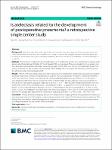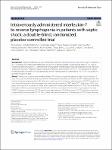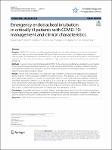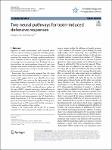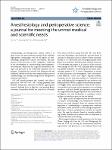Search
Author
- Osman, Ahmed I. (5)
- Daqing, Ma (3)
- Jorgensen, Ed (3)
- Li, Yan (3)
- next >
Subject
- kinh tế (26)
- Economics (12)
- programming (10)
- XRD (10)
- next >
Date issued
- 2020 - 2025 (2129)
- 2010 - 2019 (129)
- 2000 - 2009 (9)
- 1999 - 1999 (1)
Has File(s)
Search Results
This Open Textbook is a dynamic guide incorporating the essential skills needed to build a foundation in Financial Analysis. Students and readers will learn how to insightfully read a Financial Statement, utilize key financial ratios in order to derive forward-looking investment-related inferences from the accounting data, engage in elementary forecasting and modeling, master the theory of the Time Value of Money, and learn to price stocks and bonds in an environment in which interest rates constantly change. Ample problems and solutions, and review questions are provided to the student so that s/he can gauge his/her progress. This text will be continually updated in order to provide novel information and enhance students’ experiences. |
Nursing Care at the End of Life: What Every Clinician Should Know should be an essential component of basic educational preparation for the professional registered nurse student. Recent studies show that only one in four nurses feel confident in caring for dying patients and their families and less than 2% of overall content in nursing textbooks is related to end-of-life care, despite the tremendous growth in palliative and end-of-life care programs across the country. The purpose of this textbook is to provide an indepth look at death and dying in this country, including the vital role of the nurse in assisting patients and families along the journey towards the end of life. There is an emphasis throughout the book on the simple, yet understated value of effective interpersonal com... |
After citrate administration, calcium citrate complexes are formed. Clearance in diffusive modes increases with the dialysate flow, in convective modes with filtration flow [12]. Complexes that are not removed through the hemofilter return to the patient. In convective modes up to 60% of the citrate given prefilter is cleared via the hemofilter into the effluent (sometimes more in diffusive modes), the rest returning to the patient for metabolization [12]. Decreasing blood flow limits the amount of delivered citrate to the extracorporeal circuit. Limiting blood flows in convective modes in combination with high filtration rates may lead to a high filtration fraction. Therefore, higher blood flows resulting in a higher delivered citrate dose may be necessary in convective modes, comp... |
Among patients undergoing elective non-cardiothoracic surgery, patients with postoperative atelectasis were associated with a 2.33-fold higher incidence of pneumonia and a longer LOS than those without atelectasis. This finding alerts the need for careful management of perioperative atelectasis to prevent or reduce the adverse events including pneumonia and the burden of hospitalizations. |
Intravenous CYT107 reversed sepsis-induced lymphopenia. However, compared to intramuscular CYT107 administration, it was associated with transient respiratory distress without long-term sequelae. Because of equivalent positive laboratory and clinical responses, more favorable pharmacokinetics, and better patient tolerability, intramuscular administration of CYT107 is preferable. |
Reasonable selection of intubation timing is particularly important, and no premature intervention or delay in intubation can reduce the oxygen debt of COVID-19 patients. In addition to the risk of hypoxia to the patient during intubation, there is also the risk of infection to the anesthesiologist directly exposed to SARS-CoV-2. Adequate and skilled intubation preparation and intubation are needed. The preparation of endotracheal intubation includes medical equipment, fasting and water-deprivation strategy, patient preparation (evaluating airway, etc.), self-protection of healthcare provider, etc. |
The researchers mapped the projections of AP neurons and found that excitatory and inhibitory AP neurons displayed different projection patterns. Excitatory neurons projected to many brain areas, including the parabrachial nucleus (PBN), nearby NTS, and autonomic motor nuclei, while inhibitory neurons formed connections with AP neurons themselves and partly with NTS neurons. Clusters 2 and 4 primarily projected to calcitonin gene-related peptide (CGRP) + PBN neurons, previously reported as alarm neurons [3]. These results revealed the possible circuit underlying nausea sensation. |
APS will mainly promote the research and clinical practice of “4B + 4P → 4S”. “4B”: raising questions from Bedside; doing basic research on Bench; applying the research findings back to Bedside, and gaining Better outcomes. Researchers should not come back to bedside from bench with bare hands, but with “4P”: new Products, new Procedures, new Protocols, and new Proof of concept for clinical practice to achieve “better outcome”, namely as “4S”: Save more lives; Save higher quality of life; Satisfy more patients; and Save more medical resources. APS welcomes any papers in all aspects of the research with concept of “4B + 4P → 4S”, especially those reaching the “golden endpoints” and meeting the yet unmet medical needs stated as“4S” as above. |
A central theme of Developing New Products and Services is that there is, or should be, a constant struggle going on in every organization, business, and system between delivering feature-rich versions of products and services using extravagant engineering and delivering low-cost versions of products and services using frugal engineering. Students will come away with this notion and how to manifest it as a contributing employee at any company. |
Sepsis is a syndromic response to infection and is frequently a final common pathway to death from many infectious diseases worldwide. The complexity and high heterogeneity of sepsis hinder the possibility to treat all patients with the same protocol, requiring personalized management. The versatility of extracellular vesicles (EVs) and their contribution to sepsis progression bring along promises for one-to-one tailoring sepsis treatment and diagnosis. In this article, we critically review the endogenous role of EVs in sepsis progression and how current advancements have improved EVs-based therapies toward their translational future clinical application, with innovative strategies to enhance EVs effect. More complex approaches, including hybrid and fully synthetic nanocarriers that... |




